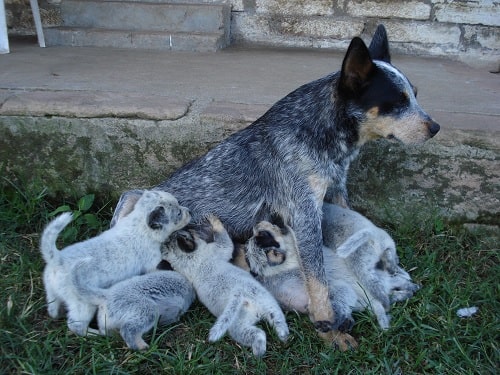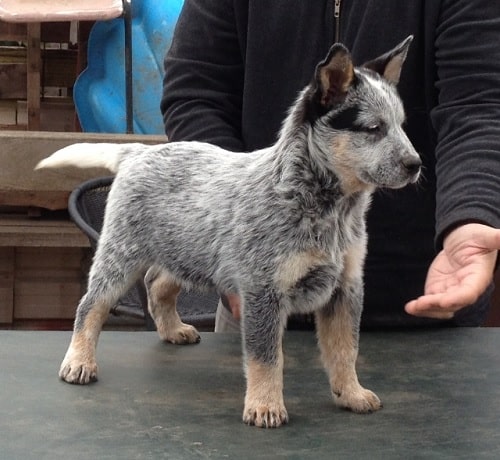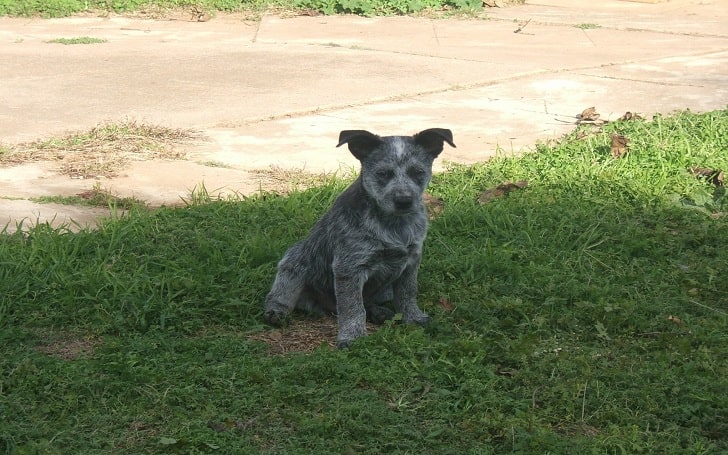Australian Stumpy Tail Cattle Puppies
Australian Stumpy Tail Cattle is a medium-sized dog breed that was developed in Australia for herding livestock on the farm. It looks very much similar to the Australian Cattle Dog but can be distinguished by the tail where the Stumpy Cattle has very short tail and long legs.
The Australian Stumpy Tail Cattle give birth to 4 to 6 puppies at a time. In this article, you will learn about the behavior and methods to take care of your Australian Stumpy Tail Cattle puppies from birth to one year.
Newborn Stage
The very first sate of the Australian Stumpy Tail Cattle is the newborn stage. It is time to welcome some new members of the family. As soon as the puppies are born, they are not able to see, walk, hear, and defecate on their own. For a few weeks, they remain helpless and fragile but the mother takes care of them in every way. She feeds them her milk which contains colostrum and is rich in antibodies.
In this stage, they need a lot of sleep to help them develop and grow. You will see the puppies getting up only for milk and again go to sleep.
Neonatal Stage (0-2 Weeks)
In the neonatal stage, the puppies are completely dependent on their mother. They cannot generate heat on their bodies by themselves, so the mother keeps them warm by letting them pile up against her body. Since they cannot defecate on their own, the mother helps to stimulate them to poop and pee by licking their belly.
Around 10-12 days, the Australian Stumpy Tail Cattle Puppies starts to open their eyes. Although they cannot see properly, they still have vivid visions. By the end of the second week, they start to hear and get familiar with their mother’s voice.

Image Source: Spock The Dog
Transitional Stage (2-4 Weeks)
It is a very important stage on Australian Stumpy Tail Cattle Puppie’s life as they start to hear, see, and do their wobbly walk. They begin to communicate with their littermates and mother by forming their own vocabularies like whining, yelping, and barking. They also take a sample of sold food from their mother as their teeth come out slowly.
Socialization Stage (4-16 Weeks)
One of the important stages in any puppy’s life is the socialization stage. This is the time where they need to know the world outside their mother and littermates. Before taking them out for socialization, train them to walk on the leash.
As they learn to walk on the leash, slowly expose them to the outside world with different people and canines. Do not take them to a crowded park as they are terrified at this age.

Image Source: Australian Cattle Dogs
They need vaccination against certain diseases at this period like distemper, adenovirus, DHPP. They also need the medication for the heartworm disease and at the age of 12-24 weeks, they need their vaccination against rabies.
Juvenile Stage (4-6 Months)
This is the period when they grow up to be more like an adult than a puppy. They start losing their puppy face and gain more of an adult looks. They are very eager to please their owners at this age, so basic training should be started at an early age. Start from basic obedience training like commanding them to sit, stay, stop, etc.

Image Source: Pet Paw
Adolescence Stage (6-12 Months)
The time between 6 to 12 months is an adolescence stage. They experienced their first heat at the age of 6-7 months. However, it is not good for their health to breed or mate at this age as it can be risky for their health. Since the Australian Stumpy Tail Cattle puppies are still growing and are holding puppies behavior for some more months, they are not read to be a mother.
Start giving them proper solid food which is healthy for their body. They need a complete balanced diet and required supplements. Enroll them in agility or advanced training as they are working dogs who need good mental stimulation and physical exercise.
Visit Doglime for more information about dog breeds and their puppies.
Tags










